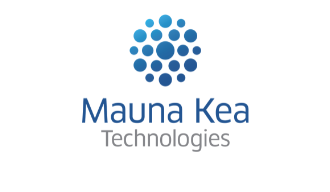Mauna Kea Technologies Announces a New Publication in Nature Scientific Reports Demonstrating the Accuracy of Cellvizio® for Food Allergy Diagnosis
New peer-reviewed evidence that Cellvizio can be used as a screening tool in patients with suspected food allergy
Mauna Kea Technologies today announces a peer-reviewed publication in the journal Nature Scientific Reports entitled “Cross-sectional imaging of intestinal barrier dysfunction by confocal laser endomicroscopy can identify patients with food allergy in vivo with high sensitivity” (2021, https://www.nature.com/articles/s41598-021-92262-4). This paper provides new evidence that Cellvizio®, thanks to its unique capability to perform real-time functional imaging in vivo and at the cellular level, can accurately diagnose patients with food allergies.
Food allergy diagnosis is challenging and relies on commonly used allergy tests such as skin prick testing or serum–radioallergosorbent tests which exhibit limited sensitivity and specificity. Therefore, oral food challenge with increasing doses of a potential antigen over a defined period of time remains the diagnostic gold standard for food allergy. However, since oral food challenge is resource-intense and requires vigilant cooperation between patient, physician, and nutritionist, it is infrequently used outside specialized centers.
This study provides new clinical evidence that Cellvizio (pCLE) imaging of the intestinal barrier during routine colonoscopy can accurately detect, in vivo and in real time, patients with food allergy.
“pCLE-based imaging is highly sensitive at 96% for the in vivo diagnosis of food allergy. Further, with a high negative predictive value of 96%, these new results indicate that pCLE can be used as a screening test that will allow stratifying patients with suspected food allergy for further diagnostic work-up,“ said Prof. Dr. med. Timo Rath, Professor of Endoscopy and Molecular Imaging, Head of the Ludwig Demling Endoscopy Center of Excellence, and Endoscopic Research at University Hospital Erlangen in Erlangen, Germany, the first author of this publication.
“This is a very exciting study exploring the clinical potential of Cellvizio’s advanced, in vivo, imaging technology to screen patients with suspected food allergy,” said Robert L. Gershon, Chief Executive Officer of Mauna Kea Technologies. “Patients with life-altering symptoms can go years without a clear assessment of their conditions due to the limited predictive value of common tests. This new high-quality study confirms that Cellvizio imaging has a very high sensitivity and negative predictive value for food allergy and can thus considerably improve patient care. With 3-4% of the adult population in western countries affected by food allergy1, the size of the market that we can address with this application is very large. As we recently announced, we have 15 centers in Europe performing this functional test with Cellvizio. We look forward to many more centers coming on line with a high number of patients in the coming quarters.”
1. Hill DA, Grundmeier RW, Ram G, Spergel JM. The epidemiologic characteristics of healthcare provider-diagnosed eczema, asthma, allergic rhinitis, and food allergy in children: a retrospective cohort study. BMC Pediatr. 2016 Aug 20;16:133. doi: 10.1186/s12887-016-0673-z. PMID: 27542726; PMCID: PMC4992234.


